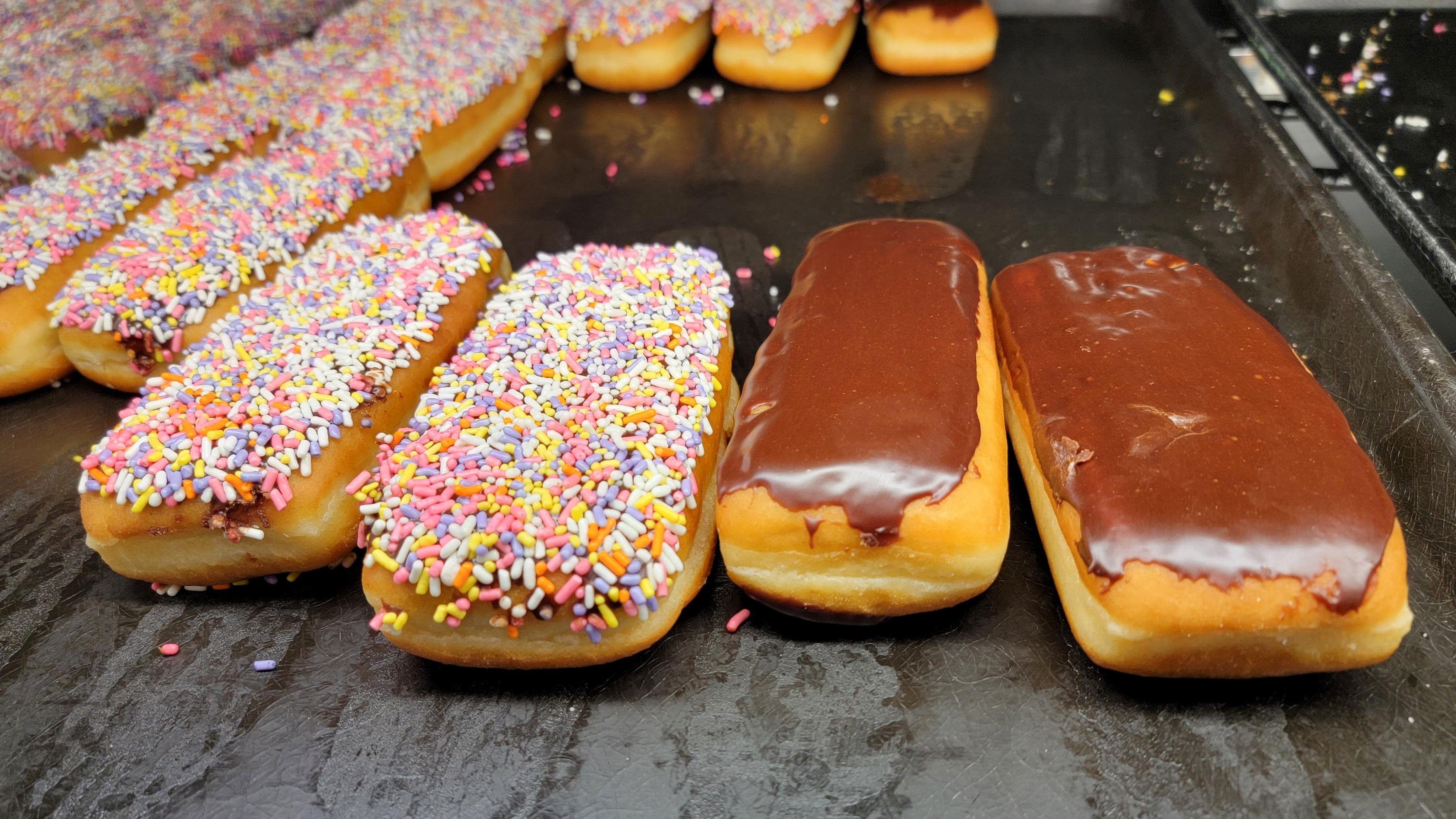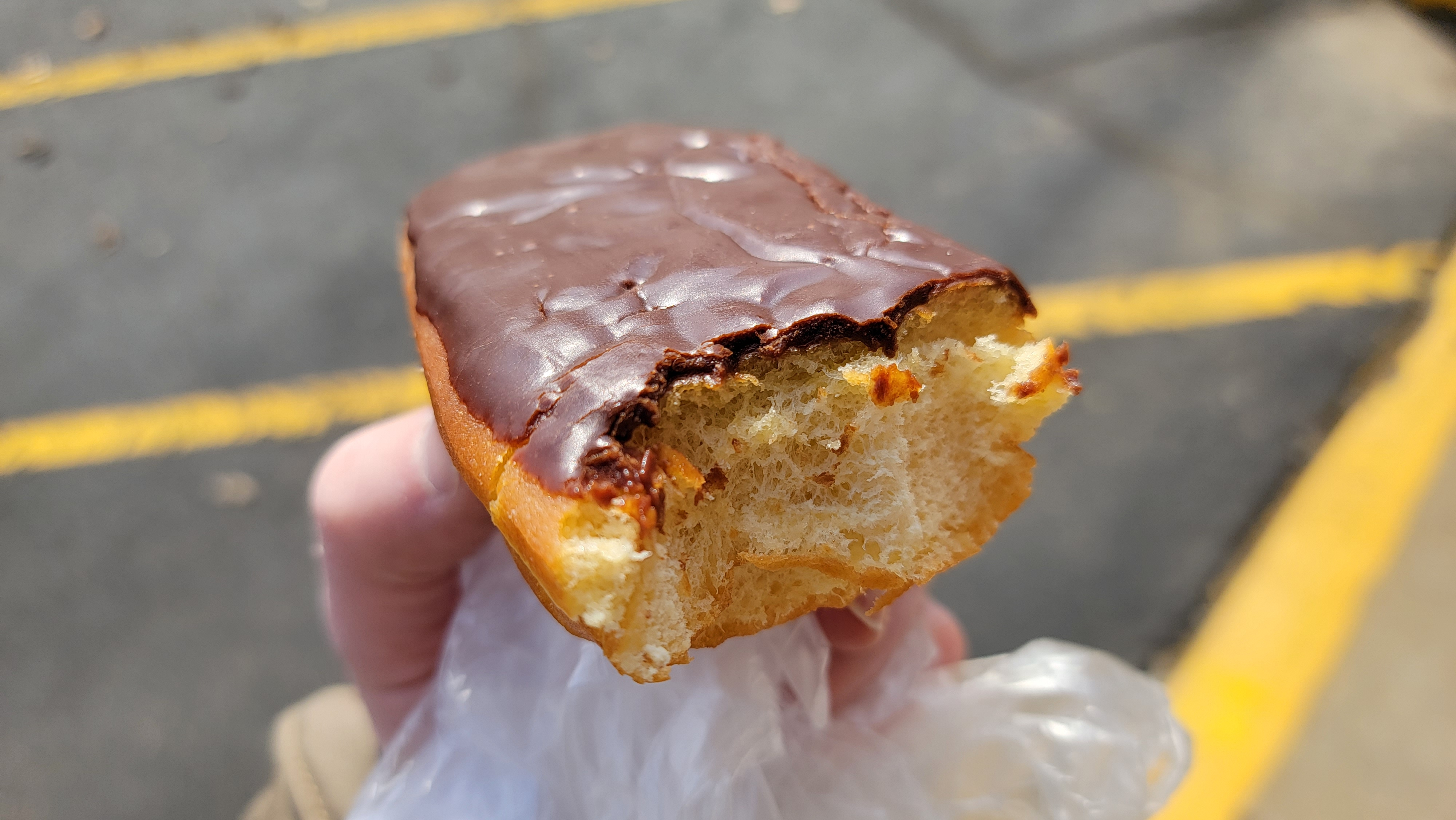The Long John Is The King Of Pastries
Keep your Bismarcks and glazed rings—when it comes to doughnut perfection, the Long John takes the crown.
In the pantheon of planet Earth's best foods, few sweets are as beloved and widespread as the doughnut. This yeasted dough, usually fried, is capable of sending a sugary spike to your brain that's as welcome alongside your first cup of coffee as it is after a hearty meal—such is the magic of doughnuts. And among all the varieties, preparations, and fancy-pants toppings to be found from Dunkin' to your local artisan bakery, a single pastry stands alone: The simple, rectangular Long John.
This doughnut in particular was a foundational treat for me; I have vivid memories of stopping at the grocery store with my parents, picking out two or three dozen doughnuts on the way to church. Do you know how good a stack of chocolate, vanilla, and sugar-glazed pastries can smell in the close confines of a minivan? Almost good enough to send you to confession.
This was a very small-town Wisconsin thing to do. And allegedly, the Long John is Midwestern in origin. But while several sources hint at this sweet piece of the past, I was unable to hunt down a credible account of its beginnings. I'm guessing any ambiguity has more to do with the name than the recipe itself. So before diving into its claim to the doughnut throne, let's take a moment to examine the language surrounding this humble treat.
How did the Long John doughnut get its name?
There seems to be some debate as to whether the Long John should technically be considered a doughnut at all. According to Serious Eats, a doughnut is defined as "a sweet deep-fried piece of ring-shape dough or batter." But this same glossary goes on to define a Long John as "a long, almost rectangular, filled doughnut, often iced." So, for the sake of ease (and because minutiae of this sort can be exhausting), I'm sticking with the colloquial genus. A Long John is a doughnut.
Depending on where you live, a Long John can go by many names. Out west, this particular shape and dough is often labeled as a "bar." The pastry shown in the photos above would be referred to as a "chocolate bar," though these are less celebrated than their cousin, the Maple Bar.
But while the Long John designation may have come from the Midwest, I'd like to take a moment to refute this passage from the doughnut's Wikipedia page: "Some parts of the American Midwest also call this type of pastry a finger doughnut or cream stick when filled." I consider this to be slander of my homeland and people. Never, not once, have I heard a coworker pop their head into my office and say, "Hey! Finger doughnuts and cream sticks in the break room!"
The French dough it differently
Here's something else the Long John most certainly is not: an éclair. Sure, they look similar, with their elongated shape, frosting glaze, and tendency to be filled with cream. But there are several key differences here, beginning with the dough. Like all non-cake doughnuts, Long Johns are made with a yeasted dough, which gives them their trademark chewiness. Eclairs, meanwhile, are made with a French Choux pastry, which uses no leavening agent whatsoever and consists primarily of butter, flour, water, and eggs. An éclair's rise comes from its high moisture content, creating steam as it bakes.
This brings us to the cooking method. While éclairs are made in the oven, Long Johns are, by definition, fried in oil. This process results in that wonderful cooking seam running along the equator, which marks its float-level in the deep frier.
What makes the Long John doughnut better?
We could argue about frostings, shapes, and fillings until the cows come home. True, I have a soft spot for the springy, yeasty dough with just the right amount of chocolate on top. But in the end, the key to the Long John's superiority lies not with its flavor, but with simple math and geometry.
Think about it: When you pay for a dozen doughnuts, you're purchasing by quantity, not weight. Naturally, to get the most calories for your money, you'd be best served with grabbing the largest (and heaviest) pastries in the case. Almost without fail, that'll be the Long John.
Their rectangular shape can also play host to a wide variety of toppings to crown this sweetest of princes. Nuts and sprinkles are the most common, but the width of the upper crust allows for sweet/savory hybrids such as bacon-topped maple bars.
There are structural considerations as well. As much as I adore cake doughnuts (especially of the apple cider variety), these have a tendency to crumble. And while a glazed Krispy Kreme may be delightful, it also tends to stick to one's fingers. Not so with the Long John, thanks to its unfrosted lower exterior.
There's a great deal to love about this simple, unpretentious treat. A basic dough capable of being either filled or unfilled, glazed or frosted, bedazzled with bacon or sprinkles, and offering the most sugar per cent—long live the Long John, and in sweetness may it reign.

